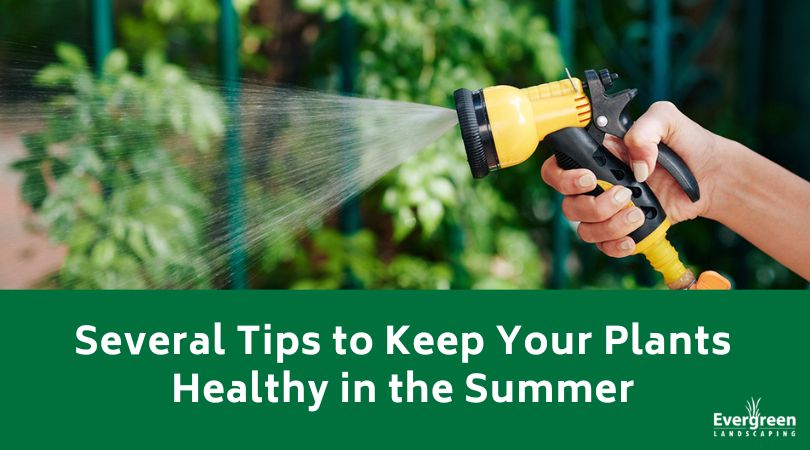
Prolonged summer heat with little rain for relief can be stressful for your plants. If you want to keep them healthy, you might need to make a few adjustments to your garden care plan to keep them happy and vibrant.
Here are a few tips to keep your plants healthy during warmer months.
Water. Water. Water.
Keeping your plants and soil properly hydrated during the warmer months is paramount. However, it may require you change your watering habits.
Much like the adage “breakfast is the most important meal of the day,” it is best for a plant’s health to water in the morning. Having the roots and soil hydrated will allow the plants to handle the withering heat throughout the day.
One of the great pleasures of having a garden is turning the hose on it. While this can be a visual pleasure, it is not the best method for our your garden’s health or most efficient use of water. Instead, fill a watering can, an empty milk jug, or soda bottle with water and apply it directly at the base of the plant.
When you water with a hose or sprinkler, less water gets to where it needs to be and the spray evaporates as it arcs to the ground or as it sits on the plants.
If you find watering in the morning burdensome, consider a drip irrigation system with a timer. This will allow water to get directly and slowly to your plants. This slow drip helps the water travel more deeply and can be stored in the soil.
Before setting your alarm an hour earlier tomorrow to do this, please determine the type of plants that are in your care. Some plants need more water than others, and if you have cacti or succulents, they will have different watering needs than flowers or shrubs.
Mulch & Compost are your friends during hot weather
The best way to help your plants is to build soil. It’s the key to healthy plants and allowing them to withstand weather challenges.
So how does mulch and compost help in warmer weather?
Think about a sponge after you’ve washed the dishes. It may not be dripping wet, but it’s not dry either. Mulch and compost act like sponges to hold more water, which is especially crucial when water is at a premium. An added bonus is that a new layer of mulch will visually refresh your garden, especially as older layers break down under the dual pressures of heat and time.
Taking Cover
Another way to protect your garden and add a touch of whimsy is to use umbrellas to protect your plants. A few hours of shade might provide enough relief to keep your plants thriving.
You don’t need to buy new ones. You can upcycle old umbrellas that might be tucked away and unused in your closet. These will provide color, and the variety will create visual interest. If you want something a bit more low-key, you can use shade cloth as a tent. It won’t be as attractive, but it will be effective.
Thinking Ahead
Whether you have a passion for gardening or you think you do but are still a novice, you might want to take a few notes during these hot days. By paying some attention to your garden in its current condition can help you make decisions for the future.
Like everything in life, things change. A once a partial sun garden is now full sun because a tree has been taken down. Or vice versa – a tree’s crown now extends ten more feet than it did when you planted your garden. Where there was once a full day of sun, there is now a lot less.
These observations will inform you when you go to the garden center and purchase new plants. Finding the right plants will go a long way in keeping your garden looking best under trying circumstances.
With just a few changes, you can keep your garden looking healthy throughout the hottest months.
If you need some help getting your existing garden thriving again, or to have a new garden beautify your yard, contact us today.
